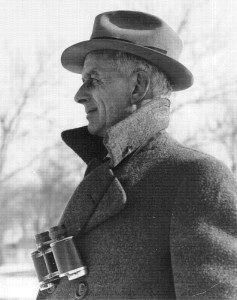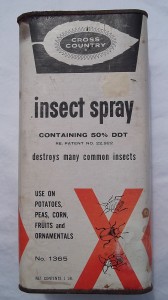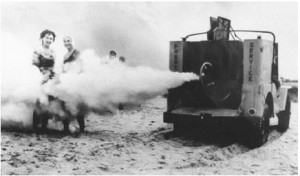 Edward S. Thomas
Edward S. ThomasIn doing background research for our new exhibit Going, Going, Gone? Endangered and Extinct Species, I was reading through some of Edward S. Thomas’s older newspaper articles. Ed Thomas was the Curator of Natural History from 1931 – 1962 at what was then called the Ohio State Archaeological and Historical Society (now the Ohio History Connection). He was also a prolific writer and authored a column in the Columbus Dispatch for almost 60 years. Many of Edward Thomas’s columns were reprinted in the book “In Ohio Woods and Fields” published by the Dispatch Printing Co. in 1981. One of his articles caught my eye, not from the title “Beware of the Boomerang!” but from the letters “DDT” that jumped off the page.
In the exhibit we feature Rachael Carson, and talk about how she warned the world about the dangers of indiscriminate use of the insecticide DDT. Her landmark book “Silent Spring” was published in 1962; so why was Ed Thomas mentioning DDT 14 years earlier!? What did he know that wasn’t to be common knowledge for over a decade later? Here are some quotes from his article:

DDT insect spray

“The new insecticides are proving invaluable in combating many specific pests which have previously been difficult to control. But let’s use them sparingly, cautiously, and as intelligently as possible. If we don’t, they’re likely to boomerang–with a bang.”
Not only does he warn us about DDT, 24 years before it was officially banned in 1972, but this article illustrates the value of natural history – of close observation of the natural world. Ed Thomas noted the problem with DDT, and the complexity and interactivity of all species, just by carefully observing the insect populations on his rose bushes.